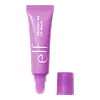What's inside
What's inside
 Key Ingredients
Key Ingredients

 Benefits
Benefits

 Concerns
Concerns

 Ingredients Side-by-side
Ingredients Side-by-side

Triisostearin
Skin ConditioningHydrogenated Polyisobutene
EmollientPolyglyceryl-10 Pentaisostearate
EmollientDextrin Palmitate
EmulsifyingEthylhexylglycerin
Skin ConditioningDiethylhexyl Syringylidenemalonate
Skin ProtectingParfum
MaskingSqualane
EmollientSimethicone
EmollientCaprylic/Capric Triglyceride
MaskingButyrospermum Parkii Butter
Skin ConditioningWater
Skin ConditioningRicinus Communis Seed Oil
MaskingButylene Glycol
HumectantGlycerin
HumectantTocopherol
AntioxidantSodium Hyaluronate
HumectantMaltodextrin
AbsorbentHydrogenated Castor Oil
EmollientLycium Chinense Fruit Extract
Antioxidant1,2-Hexanediol
Skin ConditioningCalcium Pantothenate
Xanthan Gum
EmulsifyingUrea
BufferingCaprylyl Glycol
EmollientMagnesium Lactate
BufferingPapain
Skin ConditioningSoluble Collagen
HumectantPotassium Lactate
BufferingProline
Skin ConditioningAlanine
MaskingSerine
MaskingMagnesium Chloride
Sodium Citrate
BufferingCI 77891
Cosmetic ColorantCI 42090
Cosmetic ColorantTriisostearin, Hydrogenated Polyisobutene, Polyglyceryl-10 Pentaisostearate, Dextrin Palmitate, Ethylhexylglycerin, Diethylhexyl Syringylidenemalonate, Parfum, Squalane, Simethicone, Caprylic/Capric Triglyceride, Butyrospermum Parkii Butter, Water, Ricinus Communis Seed Oil, Butylene Glycol, Glycerin, Tocopherol, Sodium Hyaluronate, Maltodextrin, Hydrogenated Castor Oil, Lycium Chinense Fruit Extract, 1,2-Hexanediol, Calcium Pantothenate, Xanthan Gum, Urea, Caprylyl Glycol, Magnesium Lactate, Papain, Soluble Collagen, Potassium Lactate, Proline, Alanine, Serine, Magnesium Chloride, Sodium Citrate, CI 77891, CI 42090
Diisostearyl Malate
EmollientPolyisobutene
Hydrogenated Polydecene
EmollientButyrospermum Parkii Butter
Skin ConditioningCaprylic/Capric Triglyceride
MaskingOryza Sativa Bran Wax
Skin ConditioningMicrocrystalline Wax
Emulsion StabilisingHydrogenated Olive Oil Lauryl Esters
Emulsion StabilisingPolyethylene
AbrasiveBeeswax
Emulsion StabilisingDimethicone
EmollientEuphorbia Cerifera Wax
Octyldodecanol
EmollientCopernicia Cerifera Wax
Parfum
MaskingRosa Canina Fruit Oil
EmollientEthylcellulose
Isostearyl Alcohol
EmollientHydrogenated Dilinoleyl Alcohol
EmollientEclipta Prostrata Extract
Skin ConditioningCyclomethicone
EmollientMelia Azadirachta Leaf Extract
Skin ConditioningMoringa Oleifera Seed Oil
EmollientDiisostearyl Malate, Polyisobutene, Hydrogenated Polydecene, Butyrospermum Parkii Butter, Caprylic/Capric Triglyceride, Oryza Sativa Bran Wax, Microcrystalline Wax, Hydrogenated Olive Oil Lauryl Esters, Polyethylene, Beeswax, Dimethicone, Euphorbia Cerifera Wax, Octyldodecanol, Copernicia Cerifera Wax, Parfum, Rosa Canina Fruit Oil, Ethylcellulose, Isostearyl Alcohol, Hydrogenated Dilinoleyl Alcohol, Eclipta Prostrata Extract, Cyclomethicone, Melia Azadirachta Leaf Extract, Moringa Oleifera Seed Oil
 Reviews
Reviews

Ingredients Explained
These ingredients are found in both products.
Ingredients higher up in an ingredient list are typically present in a larger amount.
This ingredient is also known as shea butter. It is an effective skin hydrator and emollient.
Emollients help soothe and soften your skin. It does this by creating a protective film on your skin. This barrier helps trap moisture and keeps your skin hydrated. Emollients may be effective at treating dry or itchy skin.
Shea butter is rich in antioxidants. Antioxidants help fight free-radicals, or molecules that may harm the body. It is also full of fatty acids including stearic acid and linoleic acid. These acids help replenish the skin and keep skin moisturized.
While Shea Butter has an SPF rating of about 3-4, it is not a sunscreen replacement.
Shea butter may not be fungal acne safe. We recommend speaking with a professional if you have any concerns.
Learn more about Butyrospermum Parkii ButterThis ingredient is an emollient, solvent, and texture enhancer. It is considered a skin-softener by helping the skin prevent moisture loss.
It helps thicken a product's formula and makes it easier to spread by dissolving clumping compounds.
Caprylic Triglyceride is made by combining glycerin with coconut oil, forming a clear liquid.
While there is an assumption Caprylic Triglyceride can clog pores due to it being derived from coconut oil, there is no research supporting this.
Learn more about Caprylic/Capric TriglycerideParfum is a catch-all term for an ingredient or more that is used to give a scent to products.
Also called "fragrance", this ingredient can be a blend of hundreds of chemicals or plant oils. This means every product with "fragrance" or "parfum" in the ingredients list is a different mixture.
For instance, Habanolide is a proprietary trade name for a specific aroma chemical. When used as a fragrance ingredient in cosmetics, most aroma chemicals fall under the broad labeling category of “FRAGRANCE” or “PARFUM” according to EU and US regulations.
The term 'parfum' or 'fragrance' is not regulated in many countries. In many cases, it is up to the brand to define this term.
For instance, many brands choose to label themselves as "fragrance-free" because they are not using synthetic fragrances. However, their products may still contain ingredients such as essential oils that are considered a fragrance by INCI standards.
One example is Calendula flower extract. Calendula is an essential oil that still imparts a scent or 'fragrance'.
Depending on the blend, the ingredients in the mixture can cause allergies and sensitivities on the skin. Some ingredients that are known EU allergens include linalool and citronellol.
Parfum can also be used to mask or cover an unpleasant scent.
The bottom line is: not all fragrances/parfum/ingredients are created equally. If you are worried about fragrances, we recommend taking a closer look at an ingredient. And of course, we always recommend speaking with a professional.
Learn more about Parfum